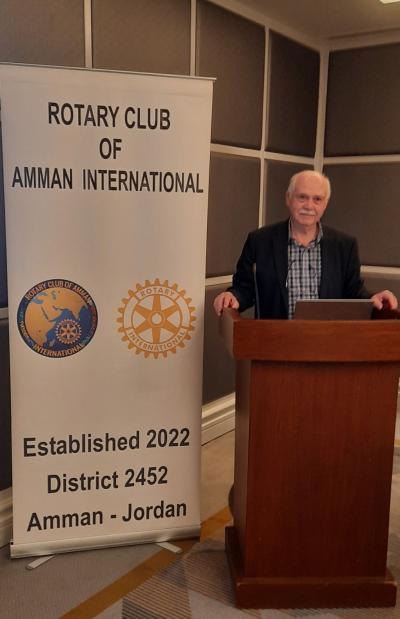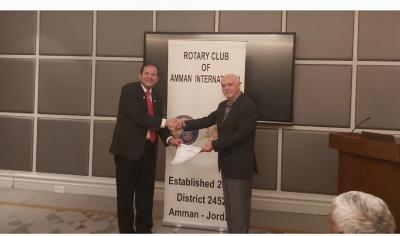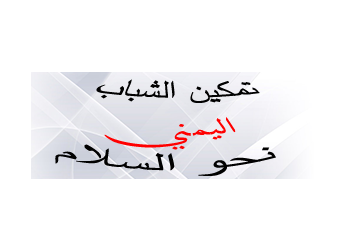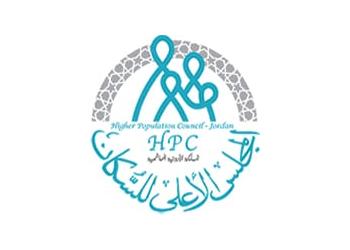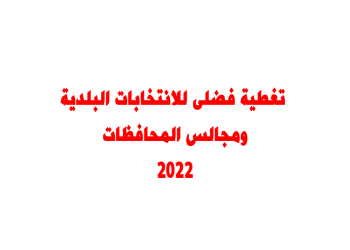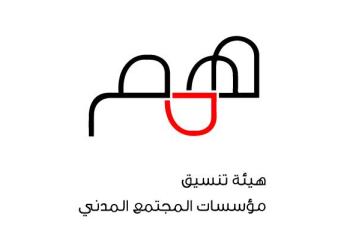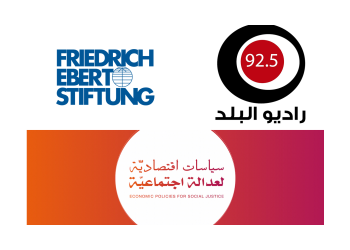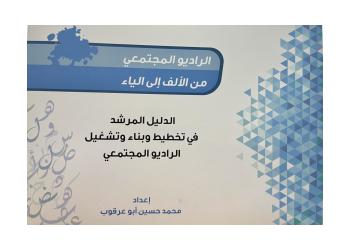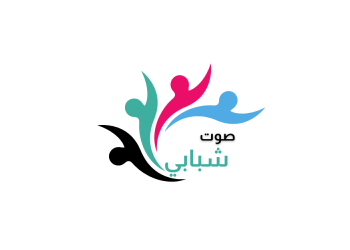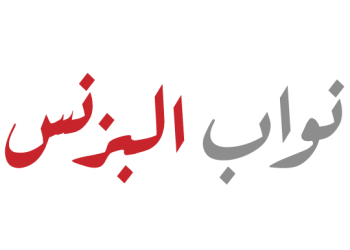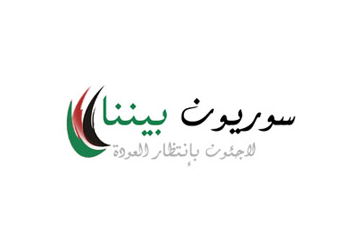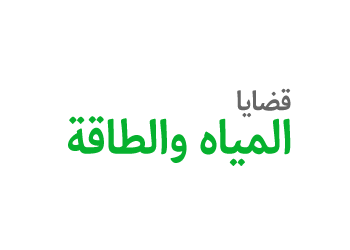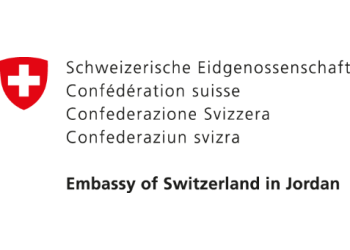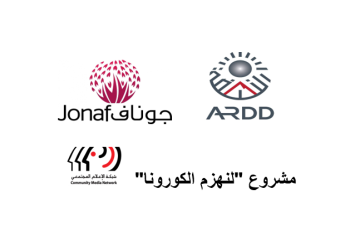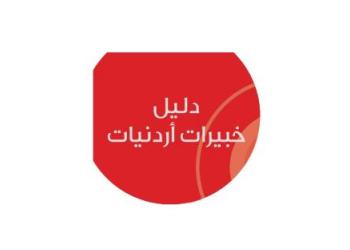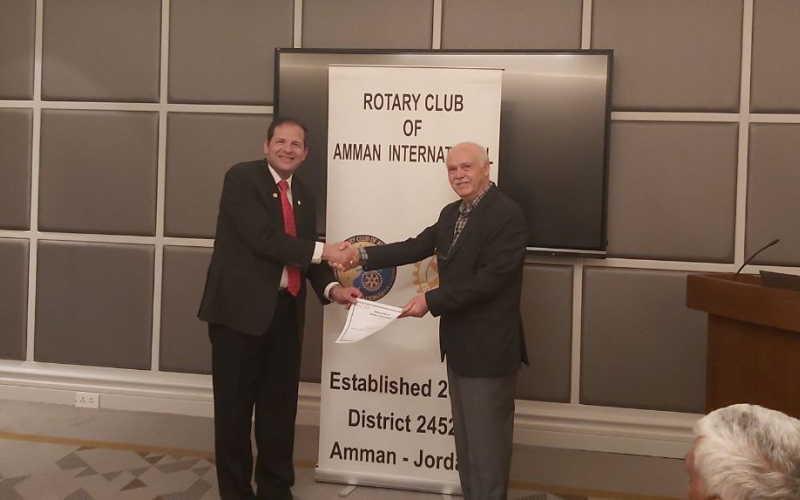
A well-respected water and agriculture expert, called on the Jordanian government to apply a well-disciplined national strategy to combat the effects of its difficult water situation. Dr. Theib Oweis, an internationally renowned water professional, spoke to the Amman International Rotary Club on Wednesday, May 3rd about the water scarcity difficulties facing Jordan and how to overcome them.
He said that although Jordan annually receives about eight billion cubic meters (BCM) of rainwater on average, most of it is lost in evaporation. He noted that 6.5 BCM (over 80%) is lost in evaporation mainly from the soil surface with no benefits. Oweis said that only 500 million cubic meters (mcm) recharge groundwater aquifers and 400 mcm flow as surface runoff which is mostly used for domestic, irrigated agriculture, and other sectors. About 600 mcm are used directly by plants in rainfed areas for field and tree crops, forests, and Badia shrubs and grasses. The remaining are lost in evaporation.
Per capita, water availability is decreasing in Jordan as the population and standard of living are increasing. Jordan’s annual per capita is now below 100 cubic meters, making the country one of the lowest four globally regarding water availability. In comparison, the Arab world average is 1000 m3 and the average world per capita rate of water availability is 7,000 cubic meters per person whereas North America stands at 16,000.
Irrigated agriculture is losing about 1% of its share of water every year. It uses 50% of all available water with over one-third of it being treated sewage.
Precipitation is declining as climate change continues to exacerbate the situation. The expected decline in precipitation in Jordan can be up to 25% by the end of the century. If groundwater resources continue to be over-pumped, even more losses are expected. It is possible however, that 2-3 bcm of the lost rainwater in evaporation annually can be recovered in the rainfed areas and the Badia by adopting in-situ rainwater harvesting at large scale. Unfortunately, most people and officials think that rainwater harvesting is either “hafaer” or small dams/reservoirs. The more relevant in-situ techniques allow crops to use rainwater directly and prevent most of it from evaporating while supporting improved field crops, trees, and forests and can rehabilitate the Badia with grasses and shrubs for livestock.
While welcoming recent government decisions to begin the desalination process and build the National Water Carrier, Oweis noted that Jordan’s water strategy, to say the least, “is confused.” Oweis said that “many years were wasted as the government put all its eggs in the now failed basket of the Red Sea-Dead Sea project hoping that it could produce the needed energy to desalinate seawater.”
The former director of the ICARDA water and land program in Aleppo and a former professor at Jordan University and at Tottori University in Japan said that the government did not properly calculate the external risks when making its plans. “They did not give enough consideration to an obvious risk that Israel, due to its accessibility to the dead sea, would veto the Red Sea-Dead Sea project. Neither did they consider a parallel backup plan to avoid losing many years of planning for an alternative.”
Oweis did not mince his words when addressing decisions made by the government solely for socio-political reasons. “The government has regularly allowed political consideration to cloud the sustainability of national resources” As an example, he said that huge sums were invested in projects that remained with little usage. “Badia livestock water harvesting ponds (hafaer) are not well planned for the beneficial use of all collected water. Livestock needs 5-10 mcm in total and ministries have constructed ponds with a capacity of 125 mcm. When full few mcm may recharge groundwater but nearly 90% of the collected water evaporates with no benefits”. Poor capacity and knowledge for planning and implementing water supply initiatives are prevalent.”
Conventional water-saving practices such as focusing on increasing land yields, which requires more of the non-available water, or demand management, which is not working, and modern irrigation systems that proved not effective but were still the only ones adopted. Government policies applying economic instruments such as subsidies are either lacking or harmful. For example, barley subsidies resulted in huge increases in livestock which overgrazed the Badia and contributed to its severe degradation and further losses of its rainwater. Heavily subsidizing irrigation water led to a slow transformation to more water-use-efficient practices and cropping patterns. Oweis suggested that instead of subsidizing irrigation water, the government should support farmers and create an enabling environment for investment in higher technologies such as greenhouses or hydroponics which produces 4- and 20-times higher yields for the same amount of water, respectively. Isn’t it strange that with all the water difficulties, more than half of the Jordan Valley practices open-field agriculture?
He said continuing groundwater mining can deprive future generations of sustainable fresh groundwater resources and damage the environment. Oweis said that, on this the critical issue, the Jordanian government lacks transparency and has shown little determination to stop this misuse of precious water.
Dr. Oweis was critical of the calls for self-sufficiency in terms of food security saying that “producing wheat and barley using fresh groundwater is irrelevant to current water crises.” Oweis suggests changing strategies and associated policies to cope with agricultural water scarcity in Jordan.
For example, he suggests that desalination is preferred to secure water for domestic, industry, and tourism. This will allow the allocation of low-cost surface and groundwater water for agriculture. He also suggests changing the focus from land productivity to water productivity (returns to a cubic meter of water) with new policies and measures to encourage investment in advanced technologies and provide incentives for changing cropping patterns and adopting precision agriculture. Crops like the Medjool date palm and protected vegetables are highly water productive and should get priority in water allocation but also the government should help small farmers to adopt such practices.

